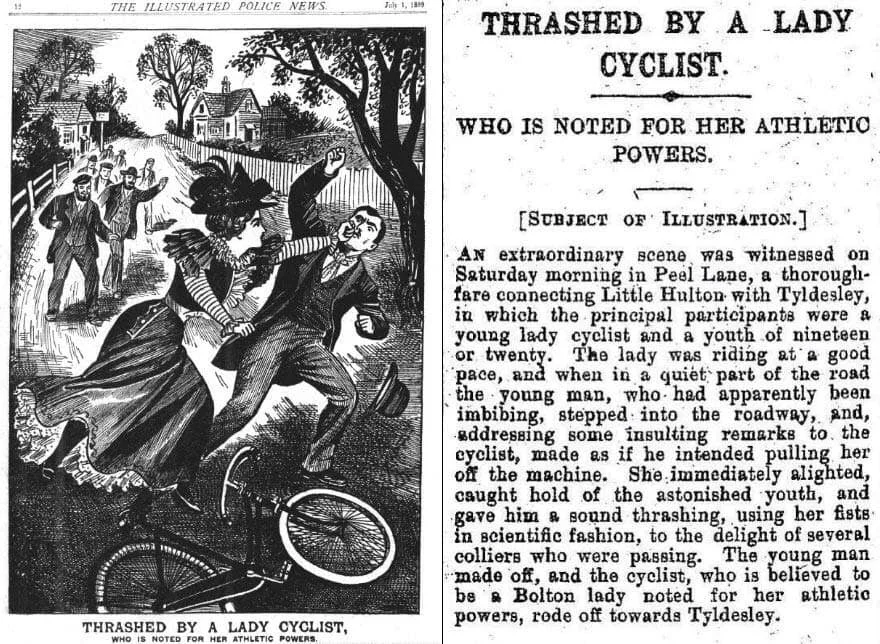Born to Ride: A Story About Bicycle Face
by Larissa Theule, Illustrated by Kelsey Garrity-Riley
Abrams Books for Young Readers (March 12, 2019)
Fiction * History * Women’s History
Audience: Ages 6 to 10
Indiebound | WorldCat
Thank you Larissa for stopping by the blog today to talk about your book Born to Ride: A Story About Bicycle Face. and close out Women’s History Month.
___________________________________________
I first read about ‘bicycle face’ around the time my daughter was learning to ride a bike. Because learning to ride a bike is now a universal rite-of-passage, I was jolted to remember there was a time when most of society believed girls had no business on wheels.
During the bicycle craze of the 1890s, ‘bicycle face’ was a made-up medical affliction supposedly caused by the strain of balancing a bike. Allegedly, it affected women more than men because they were weaker, and its purported symptoms included permanently bulging eyes and a closed-up jaw. It was bad science, but a good example of the kind of silly threats issued women who dared to ride. With regard to single women in particular, the implication was this: ‘bicycle face’ makes one ugly, and if one is ugly, one will never marry.
But say the call of the open road was too much for a woman to resist. In that case, there were recommended rules and precautions. This list of “Bicycling Don’ts for Women” from New York World, 1896, is indicative of the tremendous constraints placed on women’s behavior generally, and their riding behavior specifically. “Don’t cultivate a ‘bicycle face’” appears near the beginning.
[List of “Bicycling Don’ts for Women” New York World, 1896]
This list seems ridiculous and regressive to us, and it probably seemed so to wheelwomen of the time, too. Early wheelwomen were some of the toughest dames around and they ignored most rules and precautions except the practical ones, and in the face of frequent harassment, fought back, sometimes with their fists.
[image: “Thrashed by a Lady Cyclist” The Illustrated Police News, July 1899]
This anecdote is one of my favorites. Such spirit! However, the degree of harassment faced by the “Bolton lady known for her athletic powers” was not the worst that wheelwomen faced. Wheelwomen were criticized for being unfeminine, for being bad mothers and wives, for going against nature and becoming like men. You have only to peruse old comics in Punch to comprehend the ridicule heaped upon them. Public objection was sometimes sinister.
The ‘New Woman’ was a term that took hold in the late 19th century; it defined a feminist ideal. A New Woman sought higher education, suffrage, some degree of financial independence, and, more than likely, she rode a bike. The bicycle came to symbolize women literally riding into traditionally male spheres of influence.
In 1897, male Cambridge University undergraduates protested the admission of female students by hanging an effigy of a ‘New Woman’ on a bicycle from a window.
[image: Effigy of ‘New Woman’ on bicycle, https://graphicarts.princeton.edu/2018/02/22/cambridge-boys-celebrate-when-women-are-refused-degrees/]
Later, to celebrate the ruling that women would be denied full degrees, the crowd tore the effigy apart. The ruling wasn’t reversed until 1947.
In Born to Ride: A Story About Bicycle Face, I wanted to reclaim “bicycle face” and turn it into something strong and proud the way women have done with other words intended to disparage, such as “nevertheless, she persisted,” and the words that spurred on millions to march in pink pussy hats. I wanted to make a little space in male-dominated history for wheelwomen. But Born to Ride also captures the simple, timeless narrative of a child who learns to ride a bike and in doing so feels free—that feeling of being free is, after all, the whole point.
About the author: Larissa Theule holds an MFA from the Vermont College of Fine Arts and is the author of three forthcoming picture books. She lives in Pasadena, California, with her family.
Look for Born to Ride: A Story About Bicycle Face at your local indie bookstore or community library.





